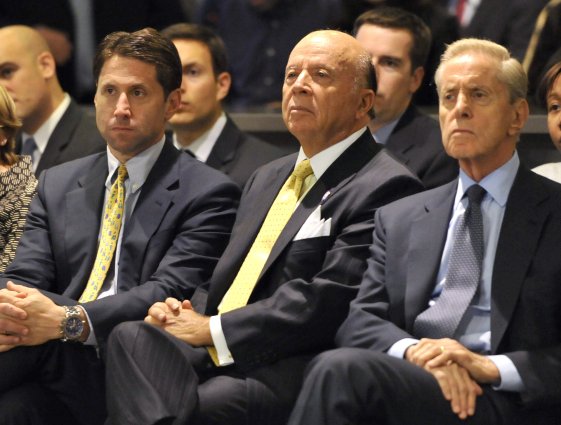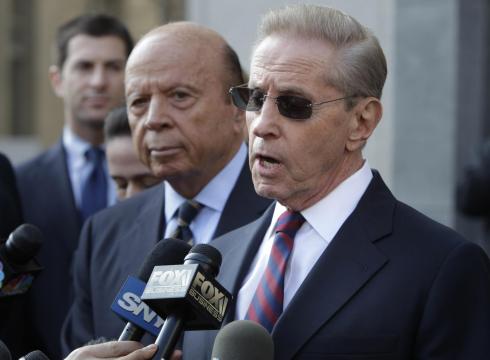
General Manager Sandy Alderson recently sat with reports and discussed offseason spending plans heading into 2015. The conclusion? The GM does not predict a generous lift in payroll for next season. The free agent class is not as strong as it’s been in recent history and the Mets can ill-afford to take up more space on the payroll with ineffective longterm contracts.
However, in an offseason where the organization could easily point to a weak crop of free agent candidates as a reason for not spending, Alderson instead opened up about the team’s inability to spend.
It’s uncharacteristic of Alderson to make such an admission when the response could have easily been deflected. When Alderson arrived in late 2010, he had certainly been briefed on the financial state of the organization and understood the obstacles standing in his way. By definition, New York is not a sports market where you can tread lightly on attendance and expect business operations to remain functional.
Total attendance at the close of 2009, Citi Field’s inaugural season, was reported to be 3,154,262. Ballpark related revenue was also estimated at $180.4 million, with more than half of that figure ($99.3 million) coming from premium ticket sales (Jim Baumbach of Newsday). In the years that followed, the Wilpons diverted financial resources towards recovering from the Bernie Madoff scandal, while simultaneously paying down $430 million in debt from Bank of America that was used to prop up operating costs.
The Mets also borrowed an additional $65 million from MLB in order to make revenue sharing payments to the league for 2010 and 2011. The organization had to take drastic steps just to be in a position to meet the minimum payments on operating costs, a miracle would be needed to reduce the principal on the debt. Through a series of remarkably coincidental events, that’s exactly what the owners got.
In 2012, New York City based investment firm Guggenheim Partners, made an aggressive purchase of the L.A. Dodgers for $2.15 billion. This had a ripple effect throughout MLB as all teams experienced higher worth from the overvalued purchase (Bloomberg.com). On top of that, new cable television deals gave teams an increase in the value of their tv affiliates, including the Mets who own SNY.

According to a report by New York Post’s Josh Kosman, the owners were able to capitalize by selling 40 percent of the team to minority investors, raising $240 million in cash. The funds allowed the team to pay down all of the debt with MLB, while also applying $100 million towards their loan with Bank of America. Although this was a major step in the right direction, the Mets were not at all stable on the home front.
From Opening Day 2009, up to the end of last season, the organization experienced a 32% drop in attendance, 58% drop in premium ticket sales and 34% reduction in overall ballpark related revenue. All of this seemingly played a huge role in the $10 million loss reported from last season. Prior to spring training in 2014, the team was due to make principal payments on the remaining $250 million owed to Bank of America and it was speculated that the owners would default as the due date neared. As Kosman also noted in his article, the owners were once again saved by a miracle, working with Bank of America to refinance the remaining $250 million in debt.
The terms of the new deal saw the loan amended and extended to span over 7 years, deferring principal payments for an unspecified amount of time with less demanding interest rates accruing on the reissued principal. Interestingly, there are no spending limitations on the team’s payroll. However, there’s a specific stipulation that the team cannot default on interest payments going forward.
Translation: The Mets can spend money on free agents, but any significant increase in payroll must be justified by the player’s production and their subsequent impact on attendance, something that cannot be predicted. As we’ve seen in the past, this rarely works out in favor of the Mets.
In the end, it’s not just the fans that are pressing ownership to deliver. Lenders are looking for yield on the money they’ve lent and investors are looking for value in the money they’ve spent. In order to turn a profit, the team must not only win, but be a contender. It’s unclear exactly how much longer Fred and Jeff Wilpon, along with Saul Katz, can retain control of the team unless that dynamic changes.
However, one fact is certainly true, the organization cannot recover without the fans. While the fans don’t always know what’s best for the team, it would be naive of Alderson and ownership to dismiss the concerns of the faithful headed into the offseason, particularly the lack of confidence surrounding manager Terry Collins. If the organization insists that no changes are needed, both in player and coaching personnel, they had better call it right from the start. If the team doesn’t make the playoffs, or worse, finds itself in an early division deficit too steep to climb out of, the owners may find themselves out of miracles.
















